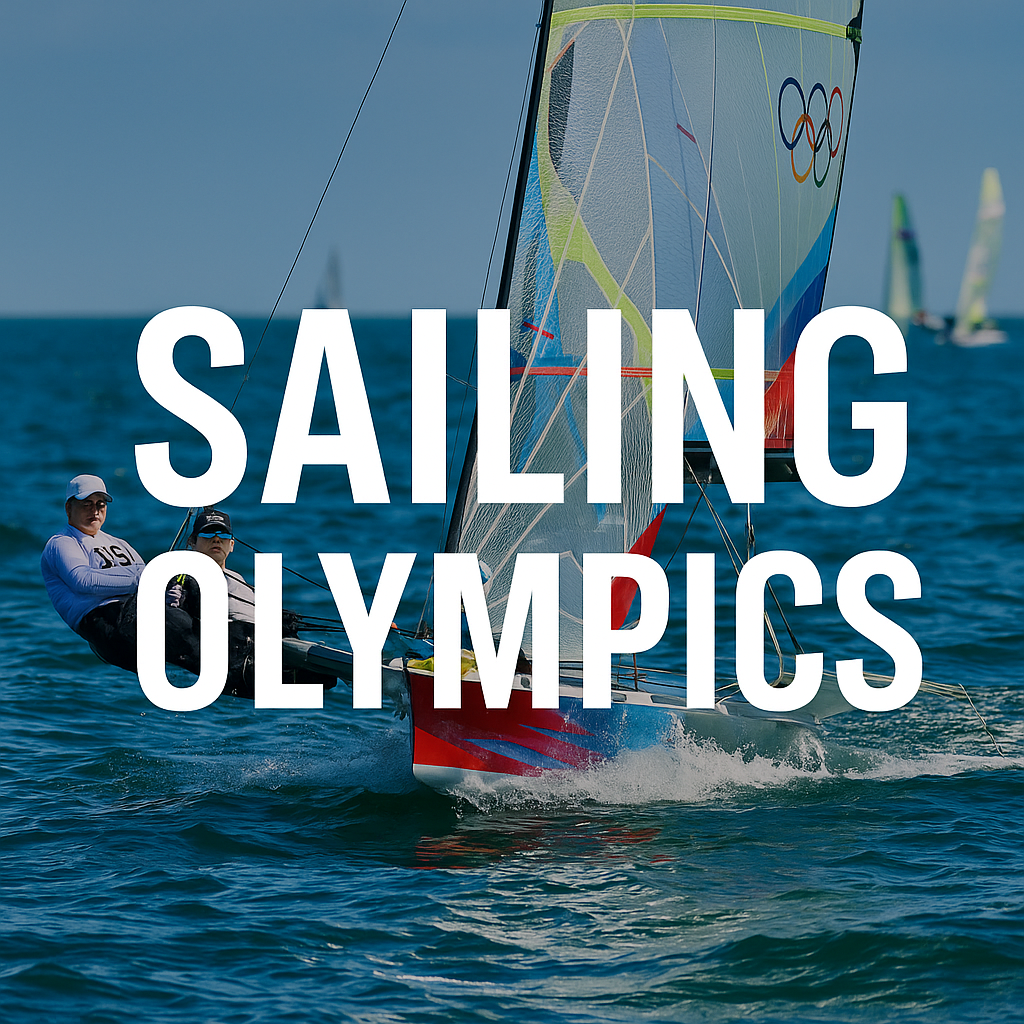What is Olympic Sailing?
Olympic sailing is an exciting water sport featured in the Summer Olympic Games. Athletes race different kinds of boats—using the power of the wind, skill, and strategy to win. It’s not just about speed; it’s about reading nature, staying balanced, and making smart moves. Olympic sailing shows courage, teamwork, and global sportsmanship.
History of Sailing in the Olympics
Sailing has been part of the Olympics since 1900. Though it missed the 1904 Games, it has been a staple ever since. The sport has evolved with new boat types, fairer rules, and greater inclusion. Over time, more nations have competed, and women’s events were added in 1988. Olympic sailing reflects progress and innovation in global sport.
Olympic Sailing Events and Classes (Men’s, Women’s, Mixed)
Today, Olympic sailing includes 10 events across men’s, women’s, and mixed-gender categories. Events include windsurfing, skiff sailing, dinghy sailing, and foiling. Mixed events, like the Nacra 17 catamaran, showcase equality and collaboration. These classes are selected for excitement, accessibility, and international representation.
Types of Boats Used in Olympic Sailing
Each Olympic boat class has unique features. ILCA (Laser) boats are single-handed dinghies known for agility. The 49er and 49erFX are high-speed skiffs for men and women. Nacra 17 is a foiling catamaran for mixed crews. The iQFoil board brings windsurfing into the future with thrilling speed. These boats demand balance, control, and fast reflexes.
Sailing Scoring System in the Olympics
Sailors compete in a series of races. In each race, first place earns 1 point, second earns 2, and so on. The sailor with the lowest total score after dropping their worst race wins. The last race, called the Medal Race, counts double. It often decides the winners and is packed with drama and precision.
Olympic Sailing Venues and Course Layouts
Sailing events are held on open water, often near coastal cities. The courses are marked by buoys and vary depending on wind and current. Venues like Enoshima (Tokyo 2020), Marina da Glória (Rio 2016), and Marseille (Paris 2024) challenge athletes with unique weather and water patterns. Conditions add a thrilling twist to each race.
Looking for a stylish haircut option off the water? Check out our expert guide on the Low Taper Fade for a clean, modern look.
Notable Olympic Sailors and Record Holders
British sailor Sir Ben Ainslie is a legend, winning four golds and one silver. Dutch champion Marit Bouwmeester has also left a mark in women’s sailing. Countries like Great Britain, the U.S., and Australia have strong Olympic sailing histories. These athletes inspire future generations with passion, skill, and sportsmanship.
Training and Preparation for Olympic Sailors
Olympic sailors train year-round, mastering wind patterns, boat handling, and mental focus. Training includes gym workouts, tactical drills, and international regattas. National sailing teams offer expert coaching, funding, and equipment. These athletes must qualify through intense competitions, showing consistency and heart.
Challenges and Controversies in Olympic Sailing
Like all sports, sailing has faced challenges. Some events have been criticized for pollution or unfair conditions. Technology debates, like GPS use or foiling advantages, spark discussion. Still, World Sailing ensures fair play and upholds the Olympic spirit.
Love solving puzzles in your downtime? Don’t miss today’s Strands Hint to boost your brain with some clever wordplay.
Future of Sailing in the Olympics
Olympic sailing is heading toward greater diversity, tech innovation, and sustainability. Newer boats like foilers are faster and greener. There’s also a push for more youth inclusion and gender balance. With LA 2028 approaching, sailing promises even more excitement and inspiration.
FAQs About Sailing Olympics
How do you qualify for Olympic sailing?
Sailors qualify through World Sailing events, like the World Championships and continental qualifiers. Each country earns a spot, and top athletes are chosen to represent them.
What are the different types of sailing races in the Olympics?
The Olympics feature fleet races, where all boats race together. There are also medal races, which decide final rankings. Classes vary, from dinghies to foiling boards.
Which country has won the most Olympic sailing medals?
Great Britain leads in Olympic sailing medals, thanks to strong national programs and legendary sailors.
What equipment is allowed in Olympic sailing?
Olympic boats must follow strict class rules. These cover sails, hulls, and gear, ensuring fairness and safety.
How is weather monitored during Olympic sailing events?
Officials use satellites, weather stations, and sensors to monitor wind and waves. This helps schedule safe and fair races.
